For many Americans, dogs are beloved family members and faithful companions. They are remarkably adaptable and have managed to work their way into nearly all aspects of everyday human life. It’s no wonder people spending time in, on, and near bodies of water would pair up with pups that share an affinity for a nice swim. Our list of the top five best water dogs could inform readers about some fun-loving breeds ready to take a dip.
Dogs are important to a lot of humans, but what makes them so? Apart from being warm, soft, and capable of inspiring our unconditional love, there are a number of unique characteristics that set dogs apart from other animals. Humans have selectively bred dogs for many generations. And in many cases, we’ve bred them to take directions to help us in a wide variety of jobs, including being companions to us. This has led to domestic dogs being born with an interest in humans. Domestic dogs have been shown to form attachment bonds with human caregivers that are very similar to those formed between children and parents. This may partly explain why they can read our emotional signals, why they become distressed (and try to help us) when we are distressed, and why MRI studies show dogs are happy when they smell their owners.
Bringing a new dog home is often a joyous and exciting time, but according to new research, it’s just as likely to cause stress for both pet and person alike. In a new poll of 2,003 dog owners, 54 percent of those who’ve only adopted “rescue dogs” from a shelter or local foster community were not prepared for how stressed out their new pooch would be while adapting to their forever home. The anxiety doesn’t last, however, as the survey reveals the average respondent says their most recent dog took between four and five days to settle in after arriving. In order to keep their dogs happy and healthy, 48 percent take their dogs for long walks and runs, while 60 percent are sure to provide proper nutrition. What about going for a swim with your canine companion?
If you are looking for a pup to keep up with coastal life, we looked to our sources to help us rank the best water dogs. For a day at the lake or an adventure down at a summertime swimming hole, these water-loving hounds will be delighted to tag along. Let us know your thoughts in the comments below!
The List: Best Water Dogs, According to Experts
1. Irish Water Spaniel
The Irish Water Spaniel is a beloved breed among waterfowl hunters. Considered bright and charming, these dogs have a reputation for being great companions in the water. American Kennel Club raves about these loveable pooches, “One of the largest and oldest of the spaniel breeds, this dog has a naturally water-repellent coat, along with intelligence, endurance, and an eager attitude. These traits combine to make the Irish Water Spaniel a versatile gundog, especially for waterfowl. They are also a lovely companion, often called the ‘clown of the spaniel family.'”

Pet MD praises this spaniel, “One of the oldest spaniels, the Irish Water Spaniel is a rare water-loving dog. Although they resemble a Poodle due to their top knot and curly coat, these spaniels are larger and have a distinctive skinny, rat-like tail. They love swimming and excel at retrieving objects.”
Wag! exclaims, “Another curly-locks, this pup not only has gorgeous fur, but it repels water, making for a perfect companion for swimming or hunting. They can’t get enough H2O, so your outing can last all day. The funny personality this one has will keep you smiling while enjoying the great outdoors! Kid-friendly, this pup has it all!”
2. Otterhound
Otterhounds are British dogs that were bred to handle the many streams and waterways of their native land. These friendly pups also have a reputation for being good with children. Tractive says, “This adorable, rare breed from Great Britain has a rough, waterproof overcoat and oily undercoat, making them a perfect water dog. They were bred as otter-hunters and can cover great distances in the water. The Otterhound loves to play and swim in water and gets along well with children.”
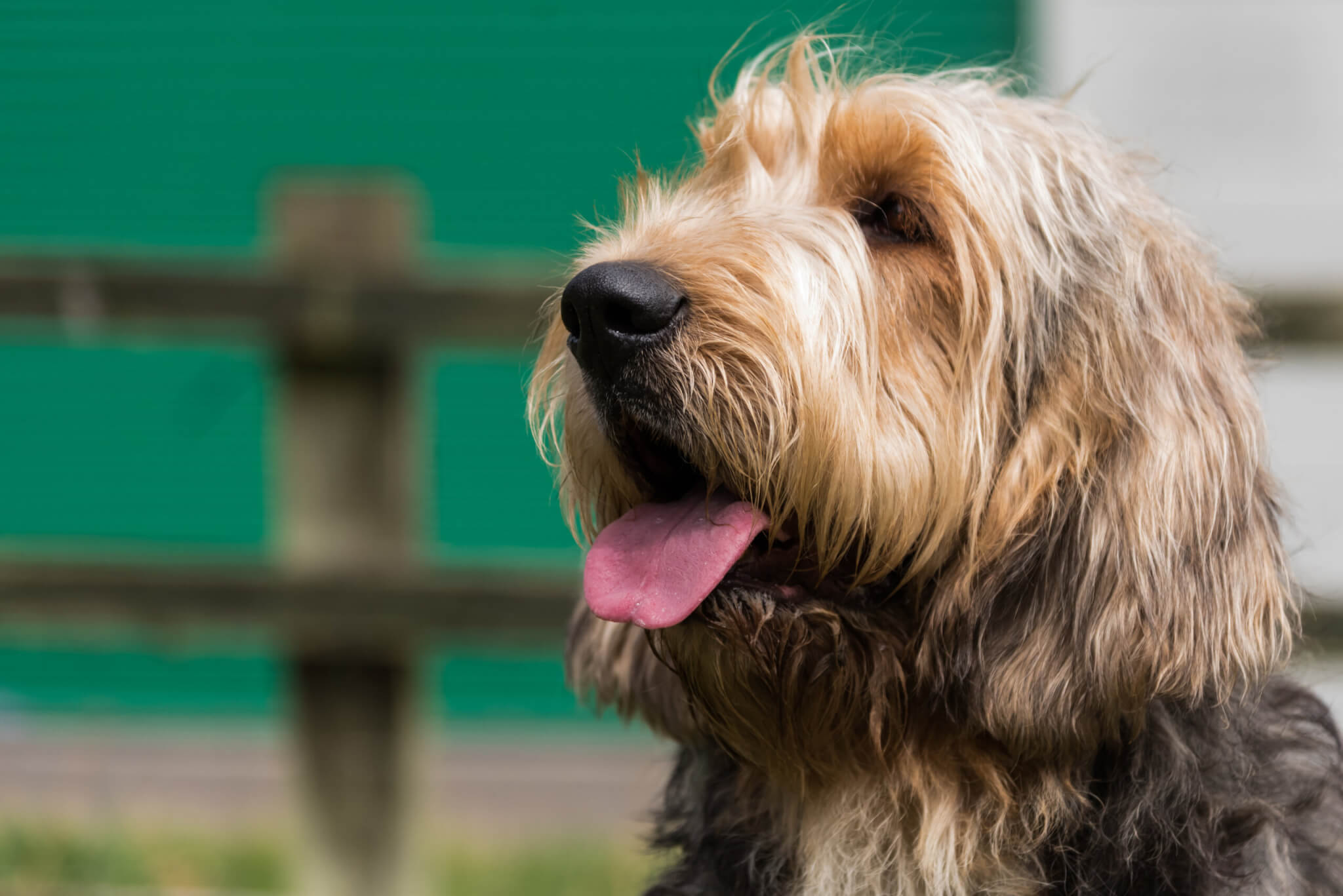
“Another one of the rarest breeds in the world, the Otterhound is still prized by many people for its skills and abilities. They are a very active dog breed and enjoy many outdoor activities, including swimming. They’re somewhat prone to joint issues, so if you have a pool or go boating, make sure to provide them with a water ramp for easy access,” describes Top Dog Tips.
Pet Keen elaborates on the history of this breed, “Otterhounds… have huge, webbed feet and a waterproof coat to help them track and hunt otters in the water over long distances. Though rare today, Otterhounds are bouncy and friendly giants that love to entertain their owners. Take these boisterous canines outdoors often so that they can run and swim to their heart’s content.”
3. Barbet
The French Barbet is a breed with a long history of sailing and hunting in the water with their human handlers. These hard-working dogs require extra attention for their grooming needs but can make great companions for outdoor adventures. Dog Time comments, “These dogs are an active breed who don’t shed much but still have a lot of grooming needs, as their nails need frequent clipping, and their coats need to be brushed constantly. But no matter what, they’re affectionate dogs who will love you as much as they love the water!”
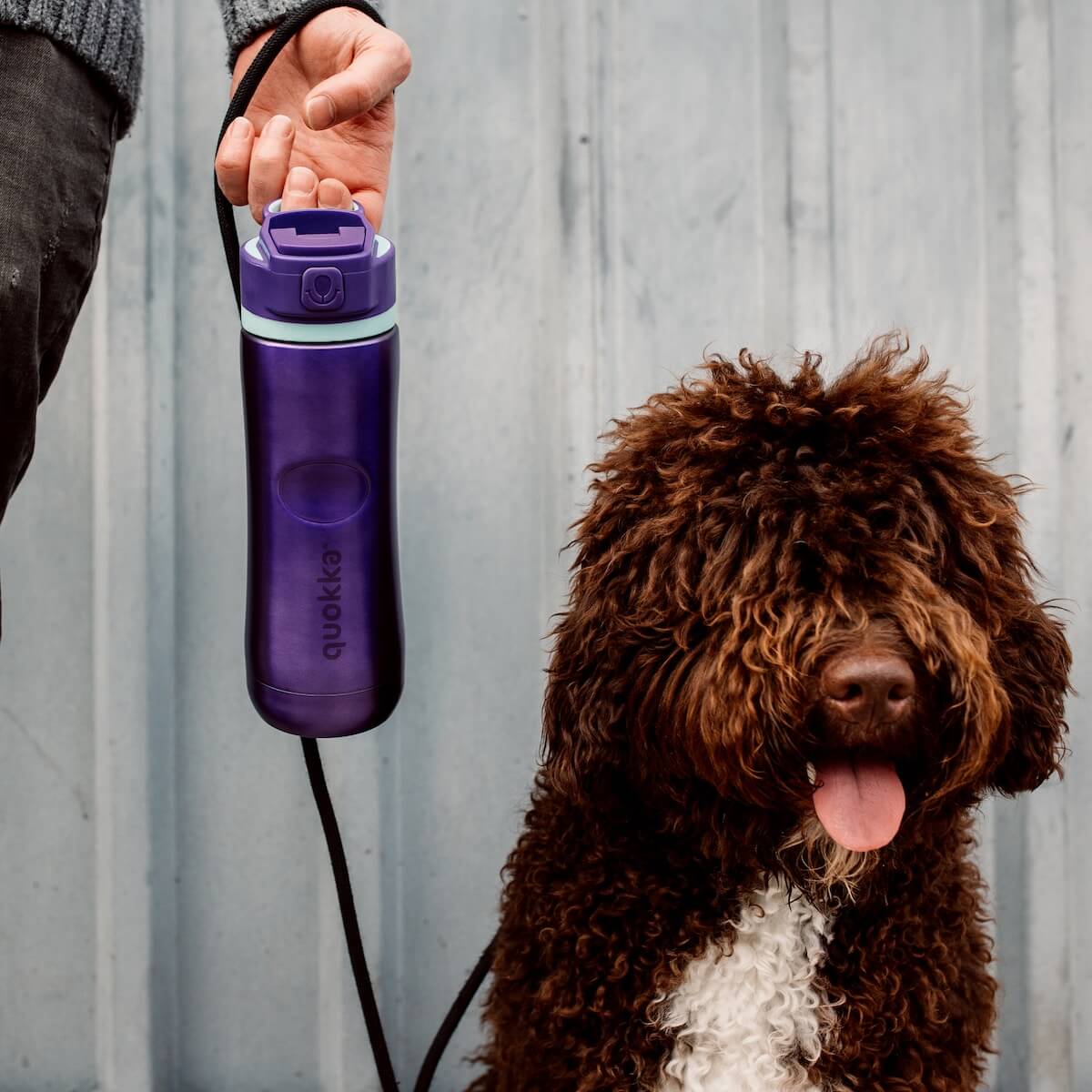
AZ Animals adds, “The barbet is a medium-sized French water dog. They have a beautiful curly coat that comes in a range of colors. These dogs are rare but are friendly, obedient, intelligent, and great with all sorts of people. They were bred to hunt waterfowl, so they naturally love the water! Because of the barbet’s specific breeding, they have physical characteristics to help them perform well in the water. In particular, their webbed paws especially help them swim really well!”
“Although a rare dog breed in the U.S., the Barbet has been a popular French water dog since at least the 16th century, when [King] Henry IV hunted waterfowl with his Barbet. Friendly, outgoing, and energetic, the Barbet is drawn to water, even muddy tracts of swampy land,” says American Kennel Club.
4. Newfoundland
These loveable lugs are graceful giants in the water. Their powerful physiques give them great mobility and finesse in the water. The Dogington Post explains, “Don’t be fooled by the Newfoundland breed’s size; it originated on Newfoundland’s coast and was a well-liked working dog on both land and water. Its duties include pulling lines through rough waters from a ship to shore and saving lost swimmers. In fact, the breed was so adept at saving drowning victims that Newfoundland dogs used to be required at lifeguard posts along the British coast.”
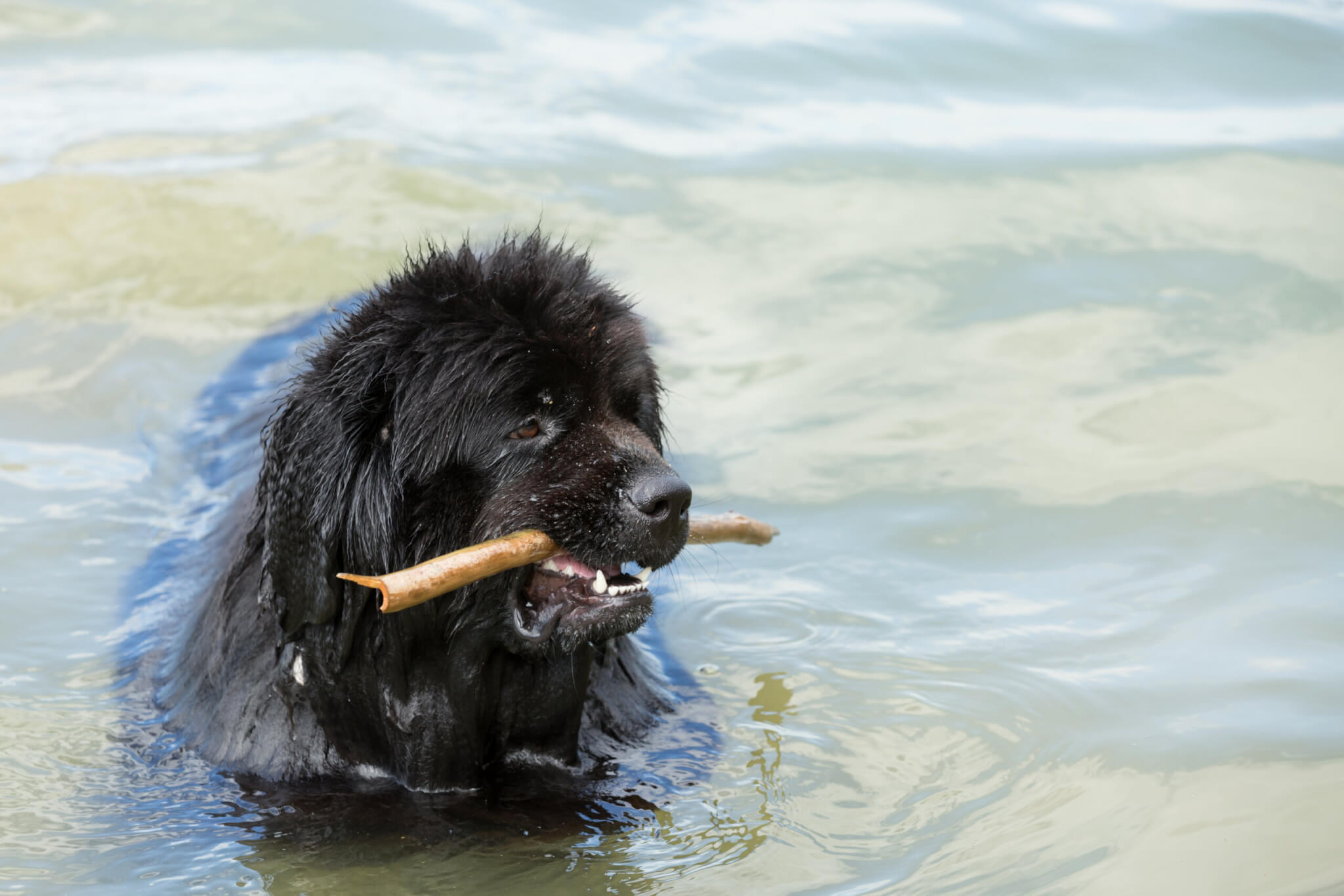
The Spruce Pets writes, “The Newfoundland is a gentle, water-loving giant. This big breed got its start when European fishermen brought dogs on boats that landed in Canada… they began breeding a capable, hardworking companion that also had a knack for water rescue. These powerful dogs can adeptly navigate through the water. And their intuitive ability to help a person in distress have made them literal lifesavers.”
“You might not think of this giant sweetheart of a dog as a water dog, but the Newfoundland was developed as a water rescue dog. They have natural lifesaving instincts and, with a large lung capacity, can swim long distances to bring a victim to safety. On land, they are used for carting or drafting… or just being an adored family pet,” states American Kennel Club.
5. Portuguese Water Dogs
The Portuguese Water Dogs are another breed with a long history of accompanying fishermen. In modern times, these pups still maintain their love for taking a plunge. The Spruce Pets claims, “Portuguese water dogs have such a natural affinity for water that it became part of their official name. These avid splash masters don’t have to be asked twice to enter the water. They were originally bred for life as a fisherman’s friend, so it’s a natural sight to see these dogs on boats… They are a natural fit for water-loving families and will happily spend the day aboard a vessel.”
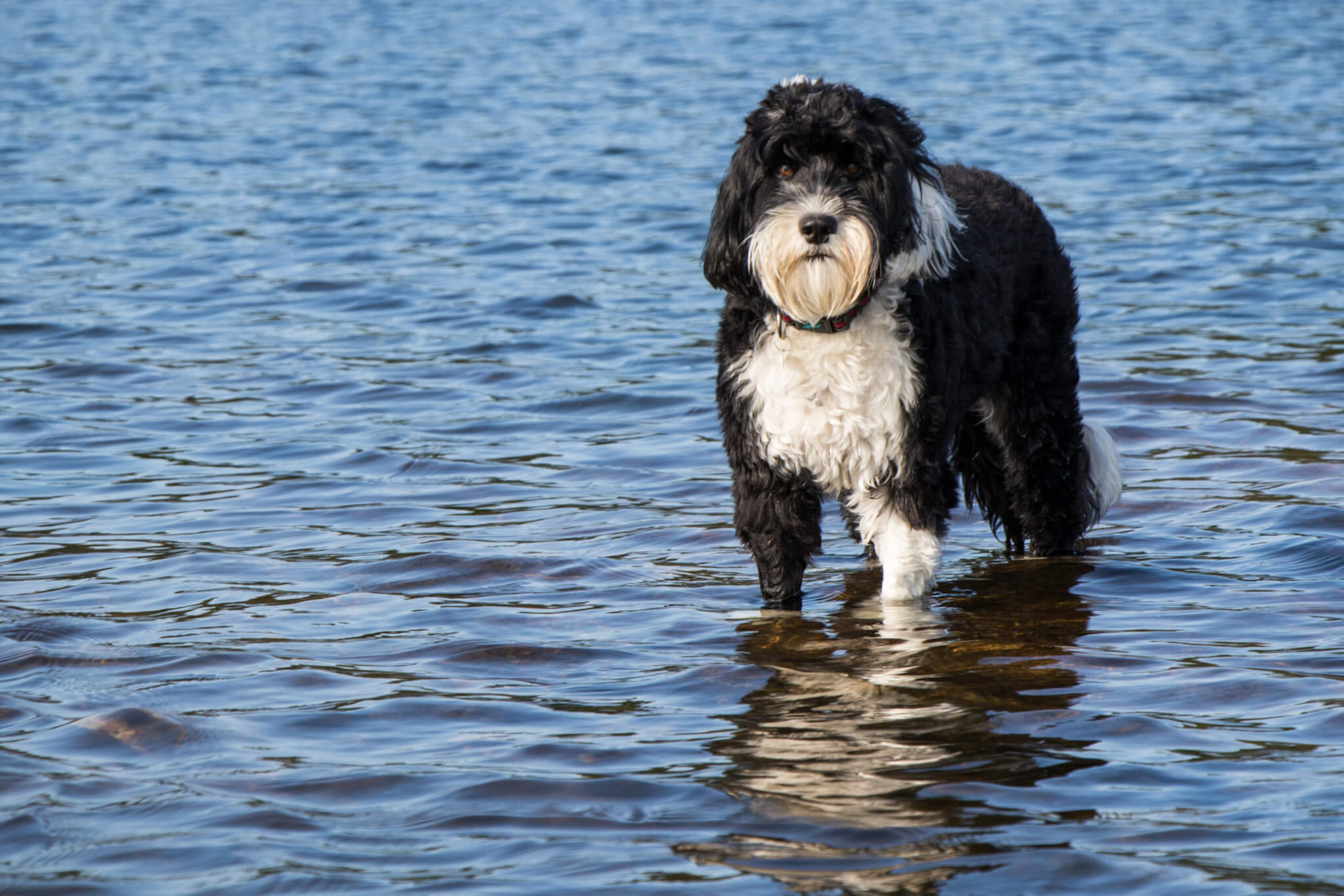
Pet MD relates some interesting facts about these great canines, “Portuguese Water Dogs have become highly prized pets due to their intelligence, loyalty, and affectionate nature. These energetic dogs sport curly or wavy fur that doesn’t shed often but does need regular grooming. To keep them happy and healthy, it’s important to provide them with lots of exercise, so be sure to take them for a swim or other heart-pumping activity for at least 30 minutes each day!”
“Portuguese Water Dogs were bred and trained to help fisherman gather fish into their nets. They were also sent to recover broken nets and lost equipment, which is why they’re great swimmers in the water. They’re highly energetic and love to be outdoors, which means they need more than a walk around the block for exercise,” says Dog Time.
You might also be interested in:
- Best Dog Life Jackets
- Most Famous Dogs
- Best Dogs for City Living
- Best Dog Breeds for Warm Climates
- Best Dog Breeds for Cold Climates
Sources:
- American Kennel Club
- Pet MD
- Wag!
- Tractive
- Top Dog Tips
- Pet Keen
- Dog Time
- AZ Animals
- The Dogington Post
- The Spruce Pets
Note: An earlier version of this article displayed a Shutterstock image incorrectly labeled by the service as an Irish Water Spaniel. The image has since been updated. This article was not paid for nor sponsored. StudyFinds is not connected to nor partnered with any of the brands mentioned and receives no compensation for its recommendations.
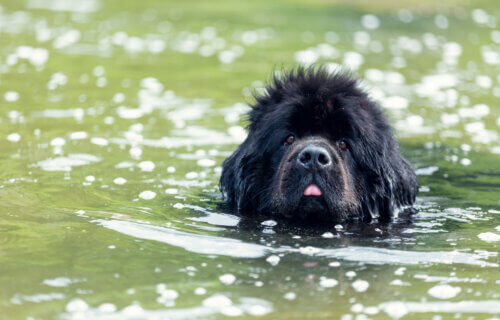
Not sure how Labs didn’t make this list. I had one that swam across a large lake here in Minnesota
What about the best water dog of all? Chesapeake Bay Retriever, swam with the surfers, always retreived, every time. Didn’t even flinch at 5 mons. with first 12 gauge fired. Just looked up. Best dog ever…
Absolutely, how could they leave the chessie out ? I’ve have 7 chesies and they are a swimming machine!!!!
The author is entitled to his opinion, but he has left out two breeds that are widely recognized for their prowess in the water. First, and probably the best water dog is the Chesapeake Bay Retriever. Swims in rough cold water that other dogs will not enter.
Second is the Labrador Retriever, another dog that is an excellent swimmer and retriever.
What about the Poodle? Their hair helps them stay warm and their name means puddle. They were bred to retrieve birds from water. Can’t keep them out of water, mine actually dives under 3 feet of water to retrieve a stick.
thanks for listening.
To whom it may concern…obviously the author of this article is a rookie…the overlooked the Chesapeake Bay retriever…hands down the all around superior breed inthis category…they didn’t even mention the Labrador retriever or even the Golden retriever…
Irish Water Spaniel picture is not a Irish Water Spaniel dog – please update photo
Thank you,
Irish Water Spaniel Owner
Shame that your photo isn’t actually an Irish Water Spaniel! Nothing like one.
Hello, as someone who has owned Irish Water Spaniels for nearly 40 years, I am appalled that you would pass of a picture of a doodle, or perhaps a PWD as an IWS IWS. IWS are solid liver, do not have hairy tails and a very definite topknot. Someone fell down on the job. I suggest you go to the Irish Water Spaniel Club of America’s website to see what a real IWS looks like. You do a disservice to all IWS owners by posting incorrect photos.
Sorry to tell you that’s not an Irish Water Spaniel in your article! We have an IWS currently, have had 4 so we know what one looks like. Would be good if you have the correct photo of one.
If that’s an Irish Water Spaniel then I’m Florence Nightingale!!!!!!
The picture you show of an Irish Water Spaniel is incorrect!
Please switch to an accurate photo!!
Thanks
Dede Selph
The photo under the description of the Irish Water Spaniel is not an Irish Water Spaniel. They do not have fuzzy faces or fuzzy tails and don’t have white on their chest. This looks like a poodle cross or maybe a Portuguese Water Dog.
Chesapeakes are number one. Maybe someone with experience can write the next article
The original European Box Labrador retriever is the strongest swimming dog of all time. Who ever you are your list is big time wrong.
I’ve used Chessies on the Jersey coast for 30 yrs…for a reason. The winters can be brutal on the water. Ditto with others who know the Chessie should be #1 on list. The poodle/doodle crowd would never survive winters here in the salt marsh…but then the author has no credibility having misidentified the IWS.